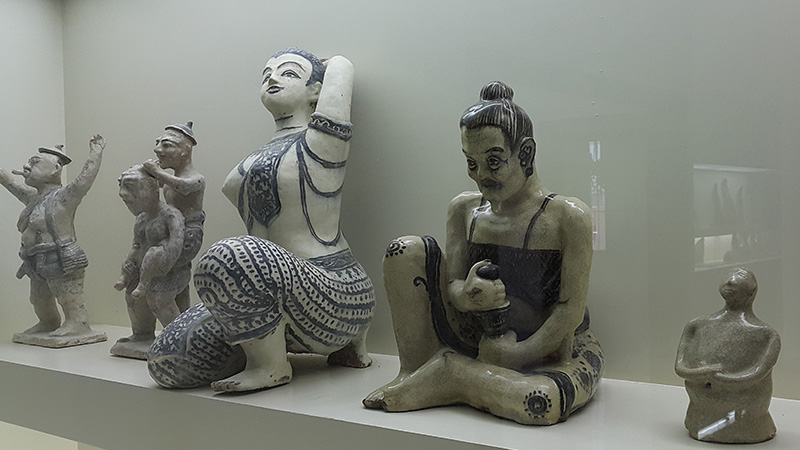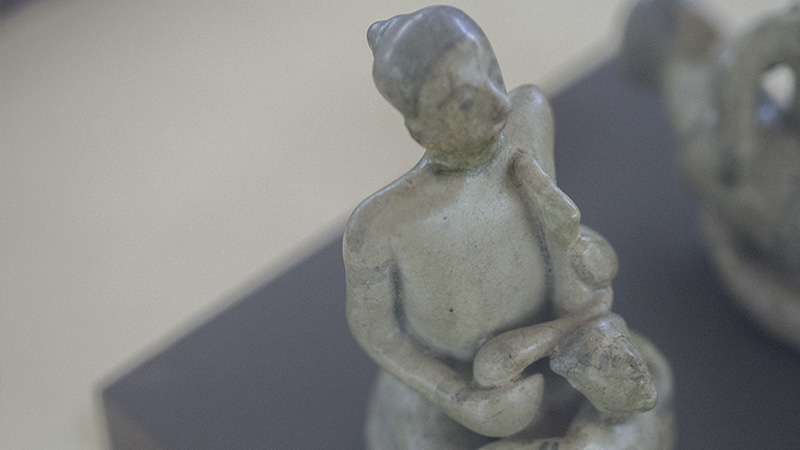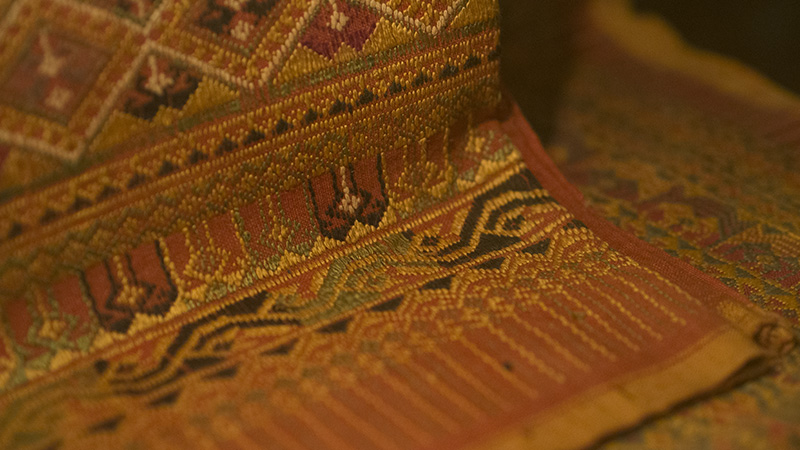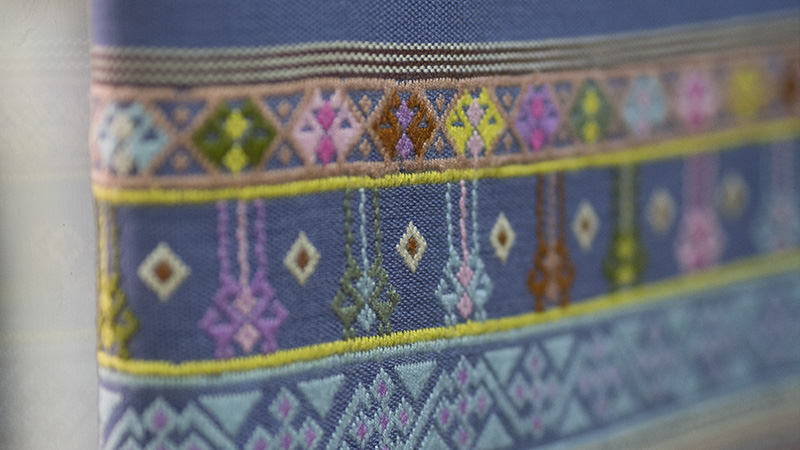Clothing
Until now, no one dares to confirm the clothing style of people in modern times clearly as there is no obvious evidence. The study of the clothing style is, therefore, based on inference from artistic evidence such as sculptures and paintings.
A lot of small porcelain clay sculptures called "porcelain dolls" were found in the ancient city of Sukhothai. It was assumed that they might be decorative or ritual items, but their utility was not found. Academics also agreed that these dolls reflected the way of life of people in those days, especially their clothing style. Like people in the previous or later period, normally, the Sukhothai people were dressed with 1 - 2 pieces of cloth; one was used to cover the lower part while the top was usually naked due to the tropical climate.
The other piece of cloth was used to cover the whole body when needed, such as cold air or in a ritual. Both men and women had long hair. Men wore their hair in a bun in the middle of the head while women tied their hair at the nape of the neck.
Clothing of monarchs and royal family members in royal ceremonies might be similar to the clothing of graven images or angel images, such as a low crown called "Serd", bracelets, anklets, layered clothing, etc. A stone sculpture was found in the ancient city of Sukhothai. Currently, it is exhibited in Ramkhamhaeng National Museum. It is a sculpture of a woman earring her hair in a bun, wearing long-sleeved shirts with breast cloth and long layered cloth, which might be inspired by actual costumes.

ตุ๊กตาสังคโลก 
ตุ๊กตาสังคโลก 
ผ้าตีนจกหาดเสี้ยว 
ผ้าตีนจกหาดเสี้ยว
Although some stone inscriptions mentioned the cloth, such as "Benjarong cloth" from the inscription of Pa Mar-nuang Temple, "Bengjati cloth, Cambodian from the inscriptions of Khema Temple, it is not known whether these names are of the type, styles, or characteristics of the clothes.
However, in the early Rattanakosin period, the migration of Puan Lao people from the city of Chaing Khwang, the Kingdom of Laos to Ban Hat Siew, Si Satchanalai, brought the wisdom of the woven into the land. This was a combination of such wisdom with the wisdom of cloth of Thai Lanna. It finally became a unique woven fabric of the city of Sukhothai, called "fabric from Hat Siew"

















